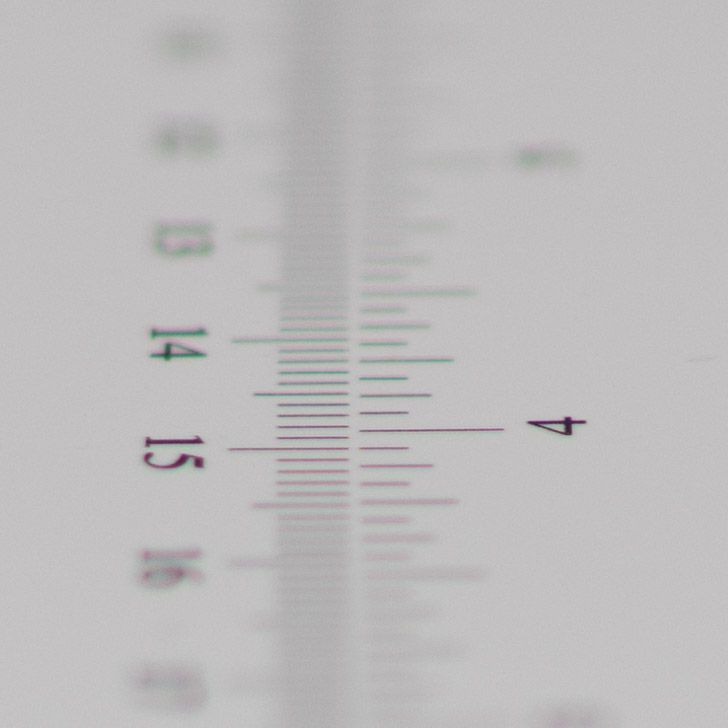|
Sony / Zeiss FE Distagon T* 35mm f/1.4 ZA ( SEL35F14Z ) - Review / Test Report - Analysis |
|
Lens Reviews -
Sony Alpha (Full Format)
|
|
Page 2 of 3

Distortion
Image distortions are marginal at just 0.09% in raw mode. There's a tiny mustache-style sub-frequency in there which is gone if you use image auto-correction.
Vignetting
Traditionally Zeiss tends to have a rather relaxed attitude towards vignetting (reads: higher than average) but the Distagon is in line with other lenses in this class. Still there's a heavy light falloff at f/1.4 - about 2.8EV (or f-stops). However, at f/2 the issue is reduced substantially to 1.5EV. Beyond it's still visible but not overly obtrusive anymore.
That's in "raw" mode but these days most users will take advantage of image auto-correction which takes care of the issue (at cost of higher image noise in the image corners). At f/1.4 the correction is as high as 1.7 f-stops - down to 1.1EV. Again, that's still visible at times but it's certainly not annoying anymore. The vignetting is irrelevant from f/2 onward in this case.

MTF (resolution)
The resolution characteristic is a bit of a mixed bag on the A7R II (42 megapixel). The broader center zone is already very sharp at f/1.4 but the outer image field is soft. This still applies to f/2. At f/2.8 there's a substantial boost in image quality. The center is excellent at this setting and the borders/corners are good to very good. The peak performance is reached between f/4 and f/5.6 with slightly better results still. Diffraction has a higher impact from f/11 but the setting is still usable.
The centering quality of the tested sample was good. Field curvature is not an issue.
Please note that the MTF results are not directly comparable across the different systems!
Below is a simplified summary of the formal findings. The chart shows line widths per picture height (LW/PH) which can be taken as a measure for sharpness.
If you want to know more about the MTF50 figures you may check out the corresponding Imatest Explanations
Chromatic Aberrations (CAs)
The Zeiss lens produces a fairly low amount of lateral CA (color shadows at harsh contrast transitions) starting with an average CA pixel width of 1.25px at f/1.4 decreasing to around 0.7px from f/2.8 onward.

Bokeh
Sheer performance is one thing but the real essence of a f/1.4 lens is its ability to produce a shallow depth-of-field and nice bokeh (rendition of the out-of-focus blur).
Unfortunately, out-of-focus highlights are not a strength of the Zeiss lens. While the highlight discs are circular (near the center), the inner zone has an onion-like sub-structure- this is typical for lenses that are based on multiple aspherical elements. As usual the roughness increases the more you stop down.
 Near the borders, the circular discs deteriorate somewhat as you can see below.
Near the borders, the circular discs deteriorate somewhat as you can see below.
 The general blur isn't all that great either. Below are two sample crops were taken at f/1.4 just in front and behind the focus zone. You may notice that the (undesired) contrast increases at edge transitions - see the spades and diamond symbols which aren't rendered symmetrically.
The general blur isn't all that great either. Below are two sample crops were taken at f/1.4 just in front and behind the focus zone. You may notice that the (undesired) contrast increases at edge transitions - see the spades and diamond symbols which aren't rendered symmetrically.
 Just to be fair here - most wide angle lenses struggle regarding the bokeh rendition thus the Zeiss is simply no exception to the rule.
Just to be fair here - most wide angle lenses struggle regarding the bokeh rendition thus the Zeiss is simply no exception to the rule.
Bokeh Fringing
So-called bokeh fringing is an effect that occurs around the focus point (on the Z-axis). It's visible as halos of different colors in out-of-focus areas - magenta (red + blue) in front of the focus point and green beyond.
The Zeiss Distagon T* 35mm f/1.4 ZA offers no obvious correction for this color fringing effect. The colored halos are very obvious at fully open aperture and remain visible from f/1.4 to at least f/2.8.
If you traverse through the aperture range below, you will also observe that the focus remains static (thus no residual spherical aberrations).
|
Move the mouse cursor over the f-stop marks below to observe the respective LoCAs
|
| f/1.4 |
f/2 |
f/2.8 |
f/4 |
|

|
|